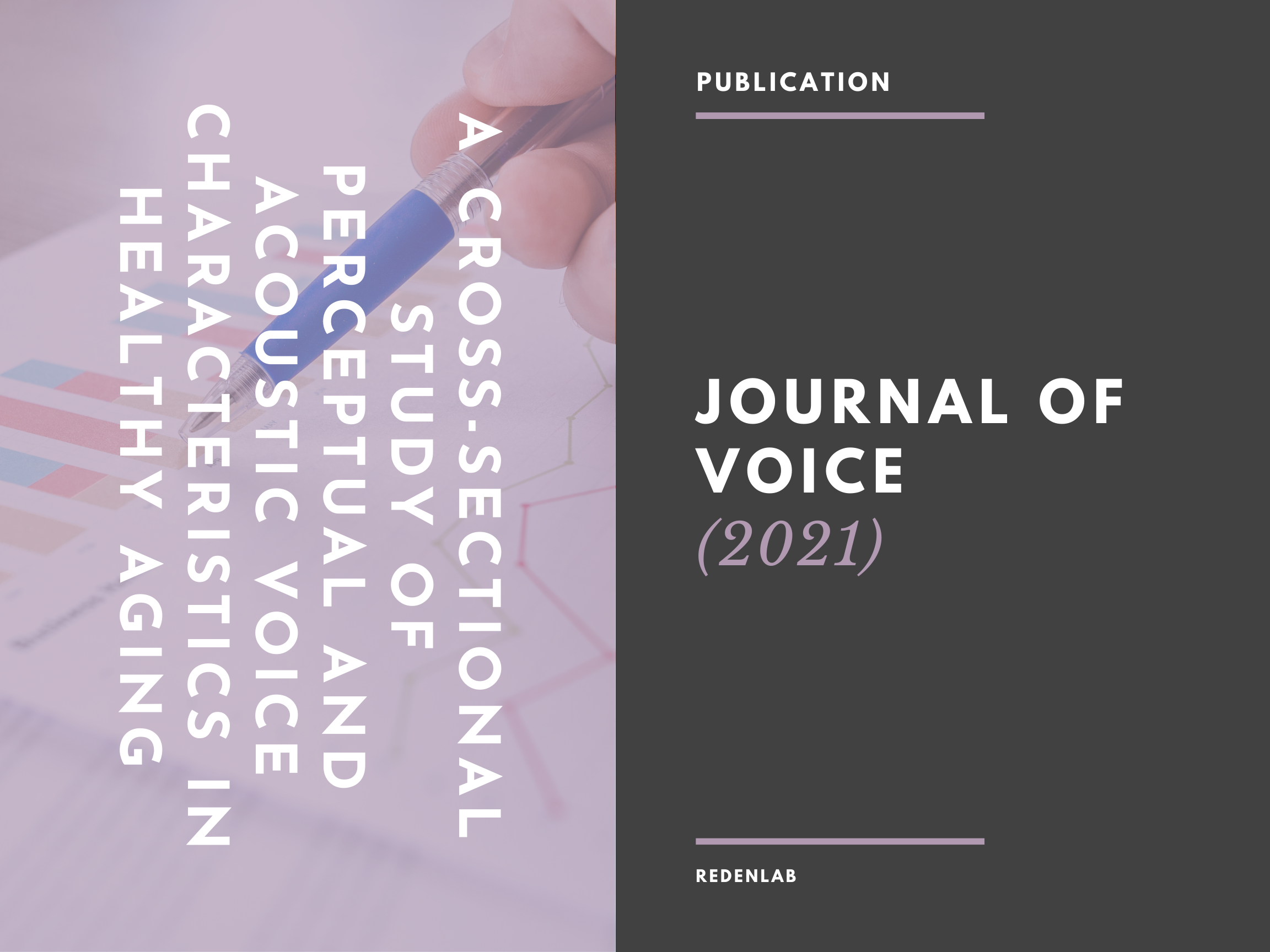A cross-sectional study of perceptual and acoustic voice characteristics in healthy aging

Redenlab CSO Prof Adam Vogel alongside colleagues at The University of Melbourne published a formative study on voice and healthy aging. 150 older adults. (50 years +) completed a comprehensive voice battery revealing subtle changes in voice. The study was published in the Journal of Voice.
The human voice qualitatively changes across the lifespan. Although some of these vocal changes may be pathologic, other changes likely reflect natural physiological aging. Normative data for voice characteristics in healthy aging is limited and disparate studies have used a range of different acoustic features, some of which are implicated in pathologic voice changes. We examined the perceptual and acoustic features that predict healthy aging.
Method
Participants (N = 150) aged between 50 and 92 years performed a sustained vowel task. Acoustic features were measured using the Multi-Dimensional Voice Program and the Analysis of Dysphonia in Speech and Voice. We used forward and backward variable elimination techniques based on the Bayesian information criterion and linear regression to assess which of these acoustic features predict age and perceptual features. Hearing thresholds were determined using pure-tone audiometry tests at frequencies 250 Hz, 500 Hz, 1000 Hz, 2000 Hz, and 4000 Hz. We further explored potential relationships between these acoustic features and clinical assessments of voice quality using the Consensus Auditory-Perceptual Evaluation of Voice.
Results
Chronological age was significantly predicted by greater voice turbulence, variability of cepstral fundamental frequency, low relative to high spectral energy, and cepstral intensity. When controlling for hearing loss, age was significantly predicted by amplitude perturbations and cepstral intensity. Clinical assessments of voice indicated perceptual characteristics of speech were predicted by different acoustic features. For example, breathiness was predicted by the soft phonation index, mean cepstral peak prominence, mean low-high spectral ratio, and mean cepstral intensity.
Conclusions
Findings suggest that acoustic features that predict healthy aging are different than those previously reported for the pathologic voice. We propose a model of healthy and pathologic voice development in which voice characteristics are mediated by the inability to monitor vocal productions associated with age-related hearing loss. This normative data of healthy vocal aging may assist in separating voice pathologies from healthy aging.
Go Here for the study link
